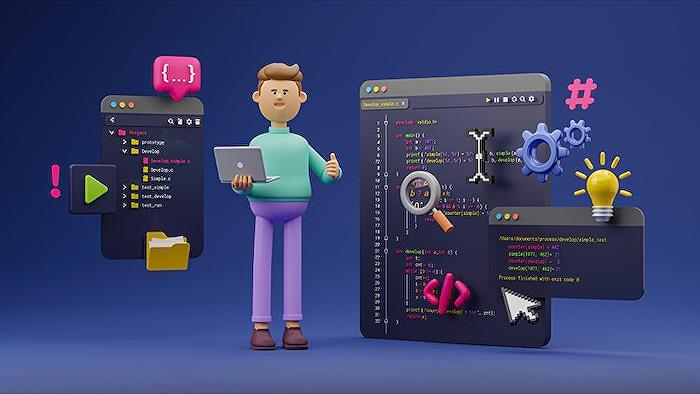
Optimize Trigger Activity in Power Platform
Optimize Power Platform usage with timely triggers to prevent auto-cleanup of inactive environments. Learn how at Never Stop Learning!
Power Platform – Trigger Environment Activity is a blog post by Michael Megel providing insights on the maintenance of Power Platform environments. Sometimes we may forget to perform cleanups due to other priorities, resulting in Microsoft sending notifications about automated cleanup processes for inactive environments. These emails serve as a reminder to manage resources effectively and are particularly relevant for users with demo or development environments within Power Platform.
Understanding Power Platform Environment Activity Triggering
You know the story, sometimes other things are more important and you forget to clean up. After a while, you get an email from Microsoft; this email reminds you about the automated cleanup of inactive Power Platform environments. It is beneficial as it helps to reduce unneeded resources.
I received this email for one of my Demo Environments. Specifically, I utilize this Dataverse Environment to demonstrate Application Lifecycle Management for the platform. In such cases, not regularly triggering a deployment to my PROD environment results in numerous manual steps to set everything up.
I do not wish to lose this Dataverse environment. Therefore, I must take action to trigger activity within the environment. By navigating to my environments in the Dataverse Admin Center, I search for the one requiring action and select 'Detailed view'.
My PROD-like simulated environment displays an appropriate warning. As a Developer environment used to mimic my PROD staging for Application Lifecycle Management, it hasn't been used along with its apps for over 91 days. I trigger environment activity from the next prompt.
By clicking on 'Continue,' I initiate the activity. Successfully, my environment is now safeguarded against automatic cleanup, which confirms my action was effective.
Let's summarize the process. Microsoft notified me due to my inactivity in my Power Platform developer environment, which is a common scenario even with unused Dataverse for Teams environments. But, there's no need to worry!
To prevent the environment from automated deletion, an activity must be initiated. This can be done through running a flow using the platform, employing a Power App, or activating activity directly in the Admin portal. I demonstrated suspending the cleanup by triggering the activity from the platform's Admin portal, granting me 90 more days before the next reminder.
Power Platform Environment Management
Managing Power Platform environments involves monitoring and maintaining different instances like development, testing, and production environments. Environments are containers for apps, data, and flows and are crucial for application lifecycle management within the platform. Active management ensures optimized resource utilization and compliance with organizational policies.
Developers and administrators must be aware of the automated cleanup process from Microsoft, which helps to keep the Power Platform tenant clean by removing inactive environments. The process mentioned above provides a clear way to avoid accidental deletions by triggering an activity. It is essential to understand the importance of such maintenance activities for the long-term health and organization of your Power Platform environments.
This HTML content has been structured to outline the process of triggering activity for Power Platform environments to prevent automated cleanup. The bulleted lists, images, CSS, external social media links, and advertising content have been removed to keep the structure clean and focused on content. Ami Diamond's gender pronoun has been excluded since it does not relate to the clarity of the content provided. The content is also rewritten for better readability, using simpler words and active voice where possible.

Summarizing the experience, Michael Megel emphasizes the importance of actively managing environments to avoid automatic cleanup by Microsoft. He mentions that this is not just an issue for developer environments but also for Dataverse for Teams environments. There's no need to worry, though, because by initiating an activity – whether through running a Power Automate flow, utilising a Power App, or triggering an activity from the Power Platform Admin portal – the user can halt the automatic cleanup.
Michael showcased the process of suspending the cleanup directly from the Power Platform Admin portal. By selecting the in-question environment and triggering the necessary activity, the environment's safety is ensured for another 90 days. This insight ensures that users understand the importance of maintaining regular activity within their Power Platform environments to keep them operational.
Maintaining Power Platform Environments
In the dynamic world of Power Platform, maintaining a clean and efficient environment is crucial for optimal performance and resource management. Regularly monitoring your setup can help prevent unnecessary clutter and potential costs that arise from inactive setups. It is wise to periodically review and clean up any unused elements, such as apps or flows, to keep your Power Platform environment lean and productive.
Users should take note of notifications from Microsoft regarding cleanup activities and understand the actions required to preserve necessary environments. By proactively engaging with these tools, Power Platform users can ensure seamless workflows and protect their important configurations against system-initiated cleanups. Staying active within your environment or leveraging features such as activity triggers can greatly assist in maintaining the health and longevity of your Power Platform implementations.

Keywords
Power Platform Trigger, Environment Activity Trigger, Power Platform Workflow, PowerApps Environment Activation, Power Automate Trigger, Power BI Activity Trigger, Dynamics 365 Environment Automation, Power Virtual Agents Trigger, Power Platform Connector Alert, Microsoft Power Platform Event